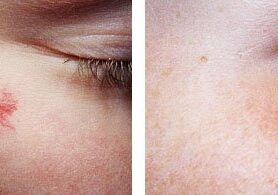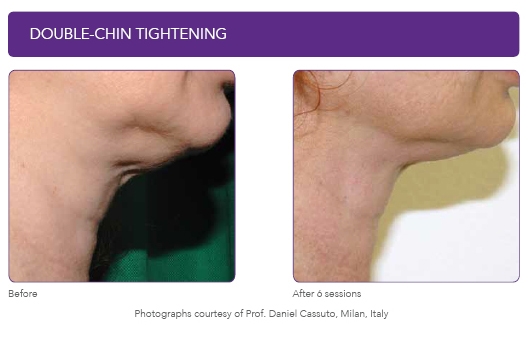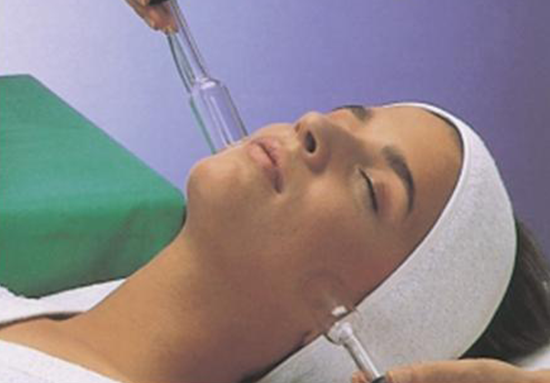Visible facial veins are dilated blood vessels. They are usually found on the forehead, nose, cheeks, eyelids, neck, and upper chest. Visible veins are most commonly seen in fair-skinned women and usually appear after the age of 35. 
Blood vessel dilation is due to the weakening of the elastic fibers in the walls of the vein. Although the exact mechanisms leading to blood vessel dilation are not understood, visible veins are associated with excessive sun exposure, normal aging, the decline in estrogen, medication use, genetics, and physical trauma. On the face, visible veins can range in size from the tip of a pencil to bigger than a pencil eraser. Visible veins may occur in a spider web fashion on the face.
Visible veins are often considered to be a cosmetic issue. However, they can be found in people with rosacea and more rarely, an autoimmune disease. Hormonal changes can be associated with visible veins as well.
There are many different treatments options available for visible veins:
1. Telangitron uses electric current from a handheld needle. Utilizing high-frequency energy, this non-invasive treatment delivers gentle electrical currents to break down the irregularity at its source. These currents are emitted from a specialized prob that will barely make contact with the skin. Over time, the targeted area will scab and fall off, revealing clearer radiant skin. The Telangitron experience offers a fast treatment duration with greater comfort than many other approaches.
2. Lasers are sources of high-energy focused light. Certain lasers, called vascular lasers, are designed to target a component of blood called hemoglobin. Vascular lasers destroy the blood vessel and leave the surrounding tissue undamaged. The side effects of laser therapy can include pain (similar to a rubber band snap) and temporary purpura, or purple pigmentation of the skin similar to bruising. The purpura usually resolves in a week. There is a risk of scarring.
3. Intense pulsed light therapy is similar to laser therapy except broadband light is used instead of focused light. The procedure itself is similar to lasers, but there is usually less purpura.
Laser treatments and intense pulsed light are typically done at four to eight-week intervals. Several treatments may be required. When new vessels appear, patients return for more treatments.







Leave a Reply